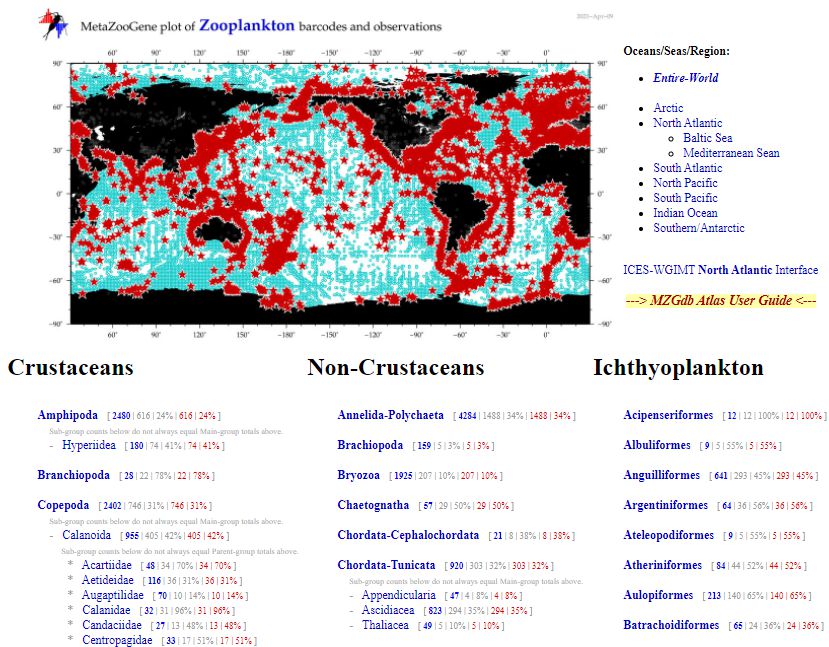MetaZooGene Barcode Atlas & Database (MZGdb)
The first Term of Reference for SCOR WG157 (MetaZooGene) was to create an open-access web portal for DNA barcodes of marine zooplankton. This portal would include a reference database (containing a compilation of quality-checked, marine zooplankton COI barcodes) and a barcode atlas (summarizing available species COI barcoding coverage for all the major zooplankton taxonomic groups, reported by ocean or region).
The MetaZooGene "Reference Database" and "Barcode Atlas" are now joined together into a single online product called the MetaZooGene Barcode Atlas and Database, or MZGdb for short. This combined resource summarizes the presence and barcoding status of major zooplankton groups and species, reported-by geographic regions, oceans, and seas (e.g., "North Atlantic pteropods", "Arctic calanoid copepods", "Southern Ocean euphausiids", "Mediterranean Sea decapods"). The MZGdb also lets the user download data from any of these taxonomic/geographic subsets.
For additional information about this effort, an open-access review paper is available here:
Toward a global reference database of COI barcodes for marine zooplankton. (Bucklin et al. 2021)
The MZGdb can be accessed by clicking on any of the images below.
(All image-links below point to the same MZGdb entry page. Click any one to go there.)
 |
 |
 |
| go to the MetaZooGene Barcode Atlas & Database (MZGdb) | ||
The MZGdb is collaboratively-developed product of MetaZoogene (SCOR WG157) and the Coastal & Oceanic Plankton Ecology, Production, & Observation Database (COPEPOD). MZGdb is an expansion of COPEPEDIA, a taxonomically arranged database of zooplankton observation, biometric trait, photographs, and now molecular data. Through COPEPEDIA's parent and sibling taxonomic tree structure and inter-relationships, information is stored and compiled at multiple taxonomic aggregations. For example, a user can access data from an individual species (e.g., Calanus finmarchicus) or just as easily get all the combined data from an entire Genus or Family or taxonomic group (e.g. all members the genus Calanus or family Calanidae or even "all copepoda").